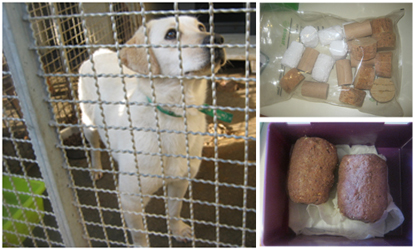Saliva is a secretion rich in epithelial cells and an excellent source of DNA for genetic analysis. Attempts to identify wild vertebrates from noninvasive samples of saliva have been restricted to searching for food remains recently handled by target species. This approach often requires close tracking of animals, which is unfeasible for most species and may explain why saliva is seldom considered in ecological studies. Authors develop a noninvasive method of collection that combines baits and porous materials able to capture saliva. Its potential in optimal conditions has been reported using confined dogs and collecting saliva early after deposition. Mean DNA concentration in saliva extracts was high (14 ng µl-1), whereas species (85%) and individual identification rates (90%) were as high as, or higher than, those reported for other kinds of noninvasive samples such as hair, urine or faeces. Genotyping errors (2%) and mean genotyping effort (2 replicates) remained at very low levels. The procedure could advantageously allow detection of socially low-ranked individuals underrepresented in faecal or urine samples associated with marking behaviour. Once adapted and refined, this technique could yield high rates of individual identification of wild vertebrates in ecological field studies requiring noninvasive sampling. informacion[at]ebd.csic.es: Lobo et al (2015) A new method for noninvasive genetic sampling of saliva in ecological research. PLoS ONE 10 (10) DOI: 10.1371/journal.pone.0139765
http://journals.plos.org/plosone/article?id=10.1371/journal.pone.0139765

 Las altas temperaturas están provocando que las lagunas y las marismas de Doñana pierdan agua rápidamente
Las altas temperaturas están provocando que las lagunas y las marismas de Doñana pierdan agua rápidamente




